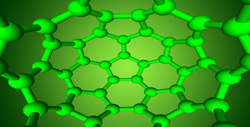Nature leads nanotech for future biomaterials
A flexible class of biopolymers, chitosans have superior structural properties and natural active ingredients for positive biocontrol activities. However, they are still ill-defined mixtures, which explains the lack of reproducibility in biomedical and pharmaceutical applications that precludes their potential for success in commercial use. The 'Nanotechnologies for bio-inspired polysaccharides: biological decoys designed as knowledge-based, multifunctional biomaterials' (Nanobiosaccharides) project focused on medical and pharmacological applications of nanoscale characterised chitosans as well as chitosan-based nanoparticles and physical hydrogels. The project's approach was based on developing biological decoys based on naturally occurring polysaccharides. Inspired by a natural material, a decoy partially resembles a natural structure but does not simply copy or mimic it. The positive aspect of this is that it can be used to elicit only the desired elements of a given natural reaction without negative side reactions. Polysaccharides are information-bearing molecules that represent a versatile and diverse class of biopolymers. In-depth molecular understanding of their biological activities and their complex and diverse composition makes analysis and synthesis extremely demanding. But nanotechnology holds the potential for enhanced analysis and manipulation at a molecular, nanoscale and maybe even single-molecule level. The EU-funded project set out to use nanotechnologies and biotechnologies for production, modification and characterisation of next generation bio-inspired polysaccharides. Knowledge generated through these activities aimed at rendering them useful as sustainable, environmentally friendly and consumer-safe biomaterials. Nanobiosaccharides researchers generated chitosans, nanoparticles and hydrogels using advanced chemical and enzymatic procedures with known modes of action, yielding products with defined physico-chemical properties and biological activities. Study results led to the formulation of a universal law of behaviour for polyelectrolyte polysaccharides in aqueous solutions. This grants a better understanding of polysaccharide solutions, nanoparticles and physical hydrogels, which will eventually allow the development of reliable, knowledge-based applications in the material and life sciences. Other project efforts took an applied approach in studying the biological properties of polysaccharide nanoparticles and examining their capacity as drug, gene or vaccine carriers. Nanobiosaccharides partners were thus able to identify the most promising types of nanoparticles for various applications. This greater understanding of structure-function relationships can facilitate the development of nanoparticles made from decoy chitosans. This in turn will help overcome biological barriers and help with delivery of complex drugs. Work on enzymatic nanostructuring of polysaccharides resulted in proof of principle that their biological activities and perhaps even physico-chemical properties are in fact dependent on nanostructure. The Nanobiosaccharides project achieved many successes in fundamental research and applied development, with project activities and exploitable results being published in international scientific journals. By paving the way for development of nanotechnologies suitable for polysaccharides, the EU can forge ahead in this promising field of functional, bio-inspired materials.







